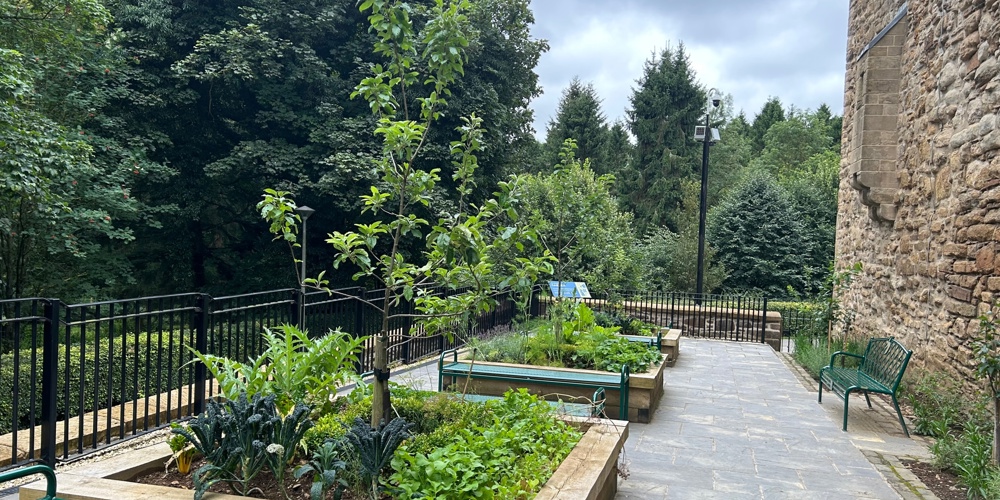The Kitchen Garden
Kitchen Gardens were common in Scotland throughout the medieval period in all kinds of dwellings from simple homes to castles. It was important for the kitchen garden to be productive, with a cycle of fruit and veg grown throughout the year. Plants were grown for the household and were divided into 3 categories, culinary plants, medicinal plants and plants for pleasure. The gardens were normally arranged in raised beds which made drainage easy. Planting was done in a strict order so that herbs and medical plants were easy for people to identify. Seeds from Europe were sought after, especially herbs for flavouring food.
Apple, pear and plum trees could be trained along the walls of the kitchen garden, with soft fruits like raspberries and strawberries planted beneath. The trees planted here are known as columnar or cordon trees. The fruit will grow directly from the tree’s trunk , but will still benefit from the extra warmth reflected from the sun by the curtain wall. These trees have been chosen as they can be free-standing without railings or wires fixed into the recently restored stonework.
Salads and vegetables such as cabbage, peas, fennel and artichokes were grown, along with edible flowers.. Most households would tend to a separate plot for growing plants used to make medicines and household goods. ‘Physic’ plants were grown to treat common aches and pains and were steeped in water to make a potion known as a simple. The kitchen garden would also have produced plants for display inside the castle, such as roses, gillyflower and hollyhocks.

